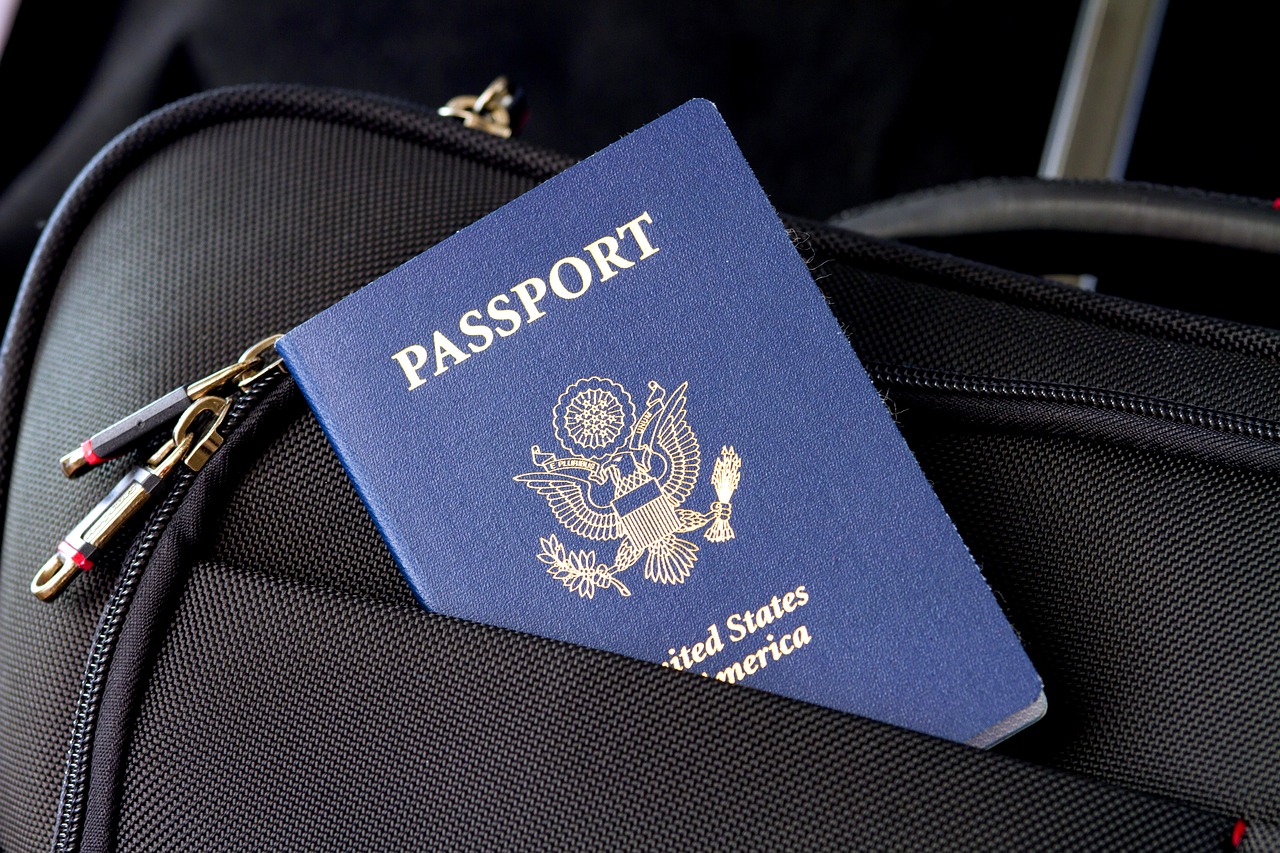Lifestyle
Favisbook.com is Helping People Globally to Book Visa Appointments

People living in the U.S., Canada, UK, South Africa and Australia can now get faster appointments for visa applications to France, Germany, Spain and Italy than ever before, allowing them to travel across many countries in the European region for the duration of their visa.
Why do visa application appointments to some European countries take so long?
The 26 Schengen countries of Europe incorporate thousands of entry points at airports, harbors and land borders. Tourism statistics show that over 500 million tourists visit Europe yearly and these numbers are expected to continue to rise at a steady pace over the next decade. That is a lot of visa applications for their representatives to process.
Nowadays, the option of walking into an embassy and requesting a visa is obsolete. An appointment has to be booked online and appointment availability is usually a problem. Most travelers now have to plan months ahead before a taking a trip, but because of work commitments, some cannot afford to wait so long.
What exactly is a Schengen visa?
Once a traveler is permitted to enter the Schengen zone, via one of the 26 countries that have signed the Schengen agreement, they can travel within it for the whole duration of their visa. These visas allow for travel through most of the countries of the European Union, Iceland, Norway, Switzerland, and Lichtenstein. Monaco, San Marino and the Vatican City are not members but have open borders. The Azores, Madeira and the Canary Islands are located outside the European continent, but are special members.
However, visitors usually apply for a visa to a specific country and this needs to be done through an Embassy or Consulate representing the country which will be their port of entry, main destination, or the place where they will stay the longest.
Which are the most popular entry points for tourists to Europe?
France, Germany, Spain, Greece, the United Kingdom and Italy are some of the most popular entry points to Europe and getting an appointment at one of their embassies or consulates takes time and depends on the availability of dates on their websites.
How Favisbook accelerates visa appointments
The booking and confirmation for an appointment for a visa application can be completed on favisbook.com. Confirmations are done within 24 hours, even during the busy season. The website allows the applicant to confirm an appointment directly on the web calendar for anything up to 90 days ahead, or to sign up for alerts when slots open up. Adjustments to appointments are easy to make if earlier dates become available.
Which countries can visa application appointments be booked for with Favisbook?
With Favisbook.com appointments can be arranged for the consulates and embassies of France, Germany, Spain and Italy from a number of countries.
Italy
Italy is well represented and visa appointments can be made for consulates in Sydney, London, Cape Town, Montreal, Toronto, Vancouver and in 10 major U.S. cities. These include Boston, Chicago, Detroit, Houston, Los Angeles, Miami, New York, Philadelphia, San Francisco, and Washington.
Spain
Visa appointments to Spain are currently available in Australia, Canada and the U.S. The cities where these can be arranged are Boston, Chicago, Houston, Los Angeles, Montreal, New York, San Francisco, Sydney, and Toronto.
Germany
Germany has a smaller availability of consulates for visa application appointments from Canada and the U.S. and appointments can be made for Boston, Chicago, Houston, Los Angeles, Miami, New York, and Toronto.
France
Currently, France is only represented on the continent of Australia, but it won’t be long before other cities are added. Visa appointments can be arranged for the French consulate in Sydney.
Final scoop:
Getting your Schengen visa can certainly be expedited without the need to re-invent the wheel. Saving time and money by using experts who’ve done it all before, seems like the way to go.
Lifestyle
The Future of Education Through Patricia Vlad’s Eyes

The traditional systems that once defined learning, rigid curricula, standardized testing, and a narrow focus on academic performance, are increasingly being questioned. And why is that?
Starting in the 1880s, thinkers like John Dewey advocated for a shift in teaching methods, leading to the rise of progressive education. Unlike traditional models that emphasize rote learning and job preparation, progressive education puts students at the center of the learning experience. Changemakers like Patricia Vlad also believe that hands-on, experiential learning is the key to deeper understanding. This approach prioritizes critical thinking, curiosity, and personal passions, encouraging students to become lifelong learners who actively engage with new ideas and problem-solving. Schools and parents that embrace this model focus not just on what students need to know but on how they can continue to grow and adapt throughout their lives.
As the world changes, so do the skills, knowledge, and adaptability students need to succeed. The future of education is about personalization, inclusivity, emotional intelligence, and meaningful learning experiences.
With years of global teaching experience, Patricia has seen firsthand how different education systems approach learning. She believes that the future of education must embrace neuroscience, technology, and self-awareness to create a system that is not just efficient but also empowering for students.
“Education should be about more than just passing tests. It should equip students with the skills to navigate life, understand their strengths, and feel empowered in their learning journey,” Patricia emphasizes.
The Future Belongs to the Emotionally Intelligent
Unlike technical skills that may become obsolete with automation, EI – our ability to understand and manage emotions, build relationships, and navigate challenges, remains uniquely human. It plays a crucial role in self-awareness, resilience, effective communication, helping individuals excel in both personal and professional life.
When it comes to EQ, think of it like this: Kids with strong emotional intelligence are better at handling stress, resolving conflicts, and overcoming challenges. Studies suggest that EQ is a stronger predictor of long-term success than IQ. And let’s be real, no matter how advanced AI gets, it will never replace the depth and impact of human connection.
How LevelUp Cultivates Emotional Intelligence Through Patricia’s Coaching
1. Learning Will Be Personalized and Strength-Based
Instead of forcing students to fit into a system, education will be tailored to each child’s learning style, strengths, and interests. Neuroscience-backed methods – such as learning based on attention spans, emotional regulation, and brain development research – will be used to create adaptive learning environments, allowing students to progress at their own pace.
Through tools like LevelUp, which incorporates the Big Five Personality Model, teachers and parents will have a better understanding of a child’s cognitive profile, enabling them to offer more personalized support.
2. Emotional Intelligence Will Be a Core Part of Learning
The future classroom won’t just cover maths, science, history, or even language – it will also focus on self-awareness, empathy, and social skills. As research shows language doesn’t just communicate thought; it actively shapes it. The intentional use of language can influence how the brain processes emotion, memory, and social connection – making it a powerful tool for developing emotional intelligence.
LevelUp integrates EI into its framework, ensuring students not only understand themselves better but also build confidence, manage stress, and develop strong interpersonal skills.
3. Education Will Be More Interdisciplinary
The future of learning will move away from isolated subjects and toward interdisciplinary education, where concepts from different fields are connected and applied to real-world problems.
For example, students might blend neuroscience with psychology to understand learning processes or combine technology and art to develop creative solutions.
4. Technology Will Support, Not Supplant Human Connection
In the classroom of the future, meaningful engagement between students and teachers will remain at the heart of learning. Peer collaboration, hands-on projects, and real-time feedback from teachers will continue to be irreplaceable elements of education.
Technology will play a supporting role enhancing, rather than dominating, the learning process.
Whether through gamified modules, virtual simulation, or adaptive platforms, tools like LevelUp will be used intentionally to deepen understanding and personalize feedback, always in service of human connection, not as a substitute for it.
5. Schools, Parents, and Students Will Work Together
Education won’t be confined to the classroom. Parents will play a bigger role in guiding their children’s learning, using tools like LevelUp to track progress, support emotional development, and encourage curiosity at home.
By strengthening the parent-child-teacher connection, education will become a team effort, ensuring every student receives the support they need to reach their full potential.
A Future Built on Empowerment
By combining neuroscience, technology, and emotional intelligence, Patricia is helping to reshape education into something that prepares students not just for exams, but for life itself.
A truly effective education system values each student’s creativity and passions—not just their ability to recall information. Instead of just delivering information and expecting rote memorization for test scores, teachers encourage active, hands-on learning through projects, experiments, and peer collaboration. This approach allows students to explore topics that genuinely interest them, making learning more engaging, meaningful, and personal.
The LevelUp platform, developed under Patricia’s leadership, is contributing to a growing shift toward education that is rooted in self-awareness and real-world readiness. Additionally, emotional intelligence is a core part of learning, not an afterthought.
One story that sticks with Patricia is that of a student named Ethan, who had always been labelled “distracted” in class. His teachers described him as bright but inconsistent, often zoning out or fidgeting during lessons. When his LevelUp profile revealed high reactivity and strong openness, a new picture emerged: Ethan wasn’t disengaged—he was overwhelmed by too much information at once and thrived when topics were explored through hands-on, creative activities.
With this insight, his teacher began breaking tasks into smaller steps and introducing art and building projects tied to the curriculum. For the first time, Ethan started raising his hand during class and even stayed back after school to show his work. “We’d been trying to ‘fix’ him when all we needed was to understand him,” his teacher later shared.
It was a small shift, but for Ethan, it changed everything.
-

 Tech5 years ago
Tech5 years agoEffuel Reviews (2021) – Effuel ECO OBD2 Saves Fuel, and Reduce Gas Cost? Effuel Customer Reviews
-

 Tech6 years ago
Tech6 years agoBosch Power Tools India Launches ‘Cordless Matlab Bosch’ Campaign to Demonstrate the Power of Cordless
-

 Lifestyle6 years ago
Lifestyle6 years agoCatholic Cases App brings Church’s Moral Teachings to Androids and iPhones
-

 Lifestyle5 years ago
Lifestyle5 years agoEast Side Hype x Billionaire Boys Club. Hottest New Streetwear Releases in Utah.
-

 Tech7 years ago
Tech7 years agoCloud Buyers & Investors to Profit in the Future
-

 Lifestyle5 years ago
Lifestyle5 years agoThe Midas of Cosmetic Dermatology: Dr. Simon Ourian
-

 Health7 years ago
Health7 years agoCBDistillery Review: Is it a scam?
-

 Entertainment6 years ago
Entertainment6 years agoAvengers Endgame now Available on 123Movies for Download & Streaming for Free
